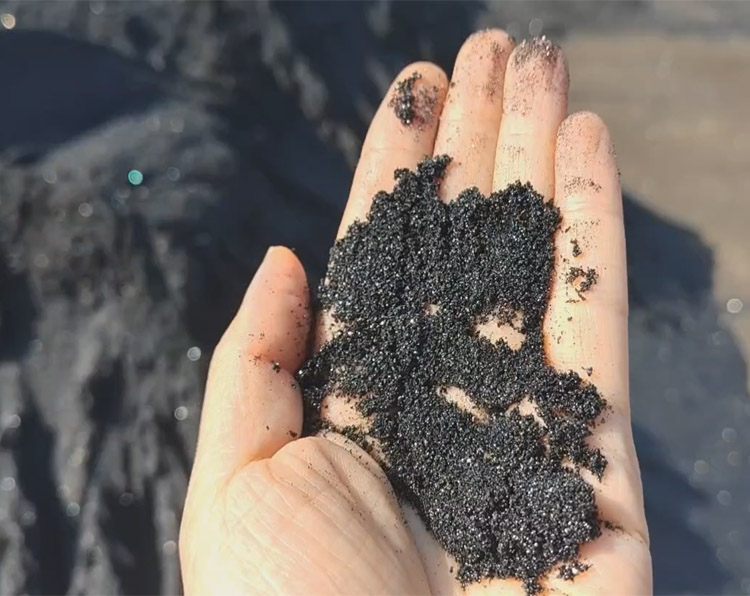Chromite Sand Market Analysis
Chromite sand is a ferrous mineral with a combination of chrome ore and iron ore. It’s a natural refractory material usually for steel making, foundry, and metallurgy. It’s important to analysis the industry, market, and development of it.
Overview of the chromite sand industry
At present, there are only small quantities of chromium-containing minerals on Earth, with only about 0.03% in the global crust. The chromium ore mainly exists in the form of oxides. Only chromium spinel group minerals with economic value. The chromite ore (chromite) is a general term for chromium spinel-type minerals.
According to industrial use, there is chromite sand of metallurgical grade, chemical grade, and refractory grade, foundry grade. Currently, the main application of chromite sand is metallurgy, steel making. Refined chromite sand is mostly for steel casting and other foundries.
The current situation of chrome ore
1. Reserves of chromite sand
The chromite mineral reserves are mainly distributed in South Africa, Zimbabwe, Kazakhstan, Pakistan, Türkiye, India, and other countries. The total proven chrome ore reserves are about 7.5 billion tons. South Africa has the largest amount of resources, accounting for about half of the world’s total resources, and is the world’s largest exporter of chromium resources. Although Zimbabwe has abundant chromium ore reserves. However, the development level is relatively low, and it announced a ban on mining in 2021. Kazakhstan’s chromium ore is mostly used for domestic production and has a relatively low export volume. In 2021, the overall chromite reserves will be 3.0863 million tons (ores), with an external dependence of more than 90%.
2. Output of chromite sand
In 2020, the global output of chromite will reach 40 million tons showing a steady growth trend. The output is mainly composed of 16 million tons in South Africa, 6.7 million tons in Kazakhstan, 6.3 million tons in Türkiye, and 4 million tons in India. The consumption of chromite sand in Asia is large, China imported a lot of raw chromite ore from South Africa and Zimbabwe. Then make refining production for the foundry and metallurgy industries. In 2021, China’s chromite output will be about 100,000 tons.
The main suppliers of chromite sand
ENRCP, Samancor, and Glencore are the world’s largest chromium ore production enterprises. These suppliers provide a total production capacity of nearly 15 million tons, accounting for 35% of the global market. At present, Chinese enterprises such as China Steel and Minmetals are investing in chromium ore resources in Africa, but their overall production capacity accounts for a relatively small proportion. China Steel Group is the earliest enterprise in China to invest in chromium ore. Currently, it has nearly 260 million tons of chromium ore resources in Africa, while China Minmetals Group has 236 million tons of chromium resources in South Africa.
| Supplier | Country | Chrome ore location | Reserve QTY(Million Ton) | Annual Capacity(Thousand Ton) |
| ENRCP | UK | Donkskoy in Kazakhstan | 225.8 | 6000 |
| Glencore | Switzerland | Waterval, Thorncliffe, Kroonda, and others in South Africa | 58 | 5500 |
| Samancor | South Africa | Samancor in South Africa | 40 | 3500 |
| Yildirim | Turkey | ETI KROM in Turkey, Vokhode in Kazakhstan | Unknown | 2500 |
| Outokumpu | Finland | Kemi in Finland | Unknown | 1200 |
| China Steel | China | Zimasco in Zimbabwe, ASA Metal in South Africa | 104 | 2000 |
| Assmang | South Africa | Dwarsivier in South Africa | 39 | 1000 |
| Afark | Finland | Stellite, Mecklenburg in South Africa, and KMS in Turkey | 14.7 | 500 |
| Ferbase | Brazil | Coitezeiro in Brazil | 41 | 450 |
Analysis of the Supply chain of chromite sand
1. Industrial chain
Chromite sand is a key raw material for stainless steel and special steel. It is widely used in industries such as metallurgy, chemical engineering, and refractory materials. Its upstream is chromium ore, mainly sourced from chromium mines and platinum tailings, which can be divided into metallurgical grade, chemical grade, and refractory material grade according to grade. The midstream includes the production and manufacturing of chromium iron and chromium salts. The downstream application includes various applications such as stainless steel, special steel, coatings, foundry, etc.
2. Application structure and current situation of chromite sand
90% of the chromium ore is processed into ferrochrome alloys, which are used as raw materials for stainless steel and special steel. Among them, stainless steel is the most commonly used, and in terms of metallurgical and chemical grades, metallurgical grade chromite is smelted into ferrochrome alloys and added to stainless steel, special steel, and other steel. Chemical-grade chromite is processed into chromates such as dichromates, chromium oxides, and chromium sulfates, which are used in various industries such as pigments, coatings, leather, and new energy. About 5% of chromium ore is processed into chemical chromium salt, with a relatively small usage and overall market size. About 5% of chromium ore is used for the production of refractory materials, mainly for the production of chromium bricks, chromium magnesium bricks, and other special refractory materials.
3. Development Trends
Since the metallurgy, steel, and foundry industries boosted after the covid, there is a larger demand for chromite sand over the world. However, there are many setbacks with the production because of less powder & capacity. So the cost of chrome ore and chromite sand will be an issue to pay more attention to the market players.
















